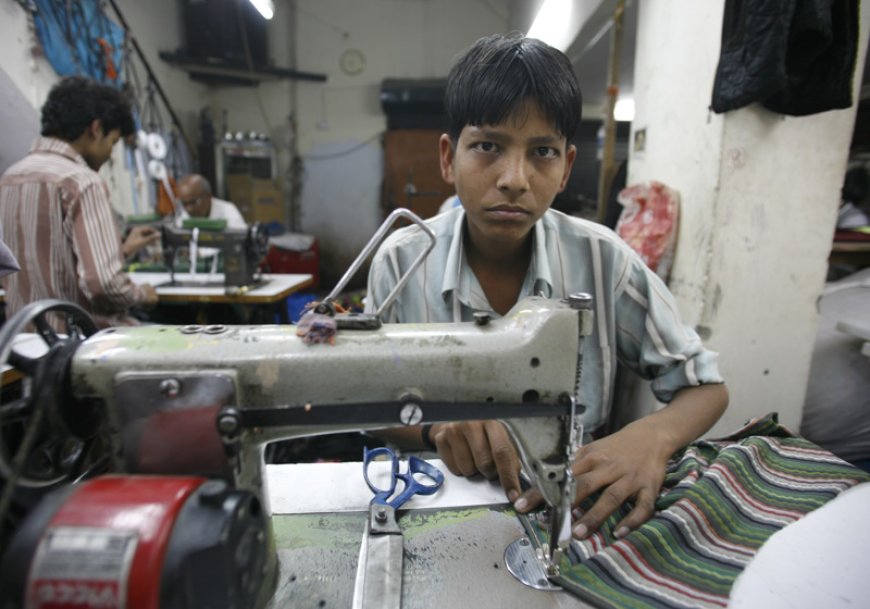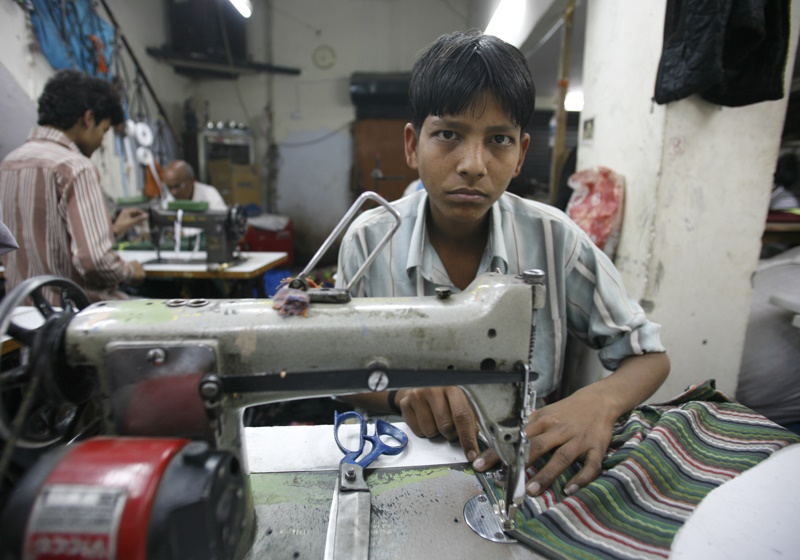NGOs link up on child and forced labour
NGOs link up on child and forced labour Ecotextile News


Workers’ Rights Non-Profits Collaborate to Address Child and Forced Labour in Apparel and Textile Supply Chains
The non-profit organizations GoodWeave International and the Fair Wear Foundation (FWF) have partnered to raise awareness about child and forced labour in hidden and informal sectors of the apparel and textile supply chains.
The collaboration aims to assist fashion brands and retailers in complying with new legislation, such as the EU Corporate Sustainability Due Diligence (EU CSDD) directive, which holds them accountable for human rights violations within their global supply chains.
As part of the partnership, Fair Wear member companies that source from India are encouraged to become GoodWeave licensees. By doing so, they can benefit from comprehensive supply chain mapping and inspections to identify and address issues related to child, forced, and bonded labour.
Existing users sign in
Register here:
SDGs, Targets, and Indicators
-
SDG 8: Decent Work and Economic Growth
- Target 8.7: Take immediate and effective measures to eradicate forced labor, end modern slavery and human trafficking, and secure the prohibition and elimination of the worst forms of child labor.
- Indicator 8.7.1: Proportion and number of children aged 5-17 years engaged in child labor, by sex and age group.
- Indicator 8.7.2: Number of victims of human trafficking per 100,000 population, by sex, age group, and form of exploitation.
- Indicator 8.7.3: Proportion of children aged 5-17 years engaged in child labor, by sex and age group, who are in hazardous work as a percentage of all children aged 5-17 years engaged in child labor.
-
SDG 12: Responsible Consumption and Production
- Target 12.4: By 2020, achieve the environmentally sound management of chemicals and all wastes throughout their life cycle, in accordance with agreed international frameworks, and significantly reduce their release to air, water, and soil to minimize their adverse impacts on human health and the environment.
- Indicator 12.4.1: Number of parties to international multilateral environmental agreements on hazardous waste, and other chemicals that meet their commitments and obligations in transmitting information as required by each relevant agreement.
- Indicator 12.4.2: Hazardous waste generated per capita and proportion of hazardous waste treated, by type of treatment.
Table: SDGs, Targets, and Indicators
| SDGs | Targets | Indicators |
|---|---|---|
| SDG 8: Decent Work and Economic Growth | Target 8.7: Take immediate and effective measures to eradicate forced labor, end modern slavery and human trafficking, and secure the prohibition and elimination of the worst forms of child labor. |
|
| SDG 12: Responsible Consumption and Production | Target 12.4: By 2020, achieve the environmentally sound management of chemicals and all wastes throughout their life cycle, in accordance with agreed international frameworks, and significantly reduce their release to air, water, and soil to minimize their adverse impacts on human health and the environment. |
|
Analysis
-
SDG 8: Decent Work and Economic Growth
The article addresses the issue of child and forced labor in apparel and textile supply chains, which is directly connected to SDG 8. This goal aims to promote sustained, inclusive, and sustainable economic growth, full and productive employment, and decent work for all. Target 8.7 specifically focuses on eradicating forced labor, modern slavery, human trafficking, and the worst forms of child labor. The article highlights the partnership between GoodWeave International and the Fair Wear Foundation to address these issues and help fashion brands comply with new legislation.
The article mentions the need for deep supply chain mapping and inspections for child, forced, and bonded labor. These activities align with Indicator 8.7.1, which measures the proportion and number of children aged 5-17 years engaged in child labor, by sex and age group. The article also implies the importance of identifying victims of human trafficking, which relates to Indicator 8.7.2.
-
SDG 12: Responsible Consumption and Production
The article indirectly relates to SDG 12, which focuses on ensuring sustainable consumption and production patterns. Target 12.4 specifically aims to achieve the environmentally sound management of chemicals and all wastes throughout their life cycle, while reducing their release to minimize adverse impacts on human health and the environment.
The article does not provide explicit information about the management of chemicals and wastes. However, it emphasizes the need for fashion brands and retailers to comply with new legislation, such as the EU Corporate Sustainability Due Diligence directive. This legislation likely includes requirements related to responsible consumption and production practices, although it is not explicitly mentioned in the article.
Behold! This splendid article springs forth from the wellspring of knowledge, shaped by a wondrous proprietary AI technology that delved into a vast ocean of data, illuminating the path towards the Sustainable Development Goals. Remember that all rights are reserved by SDG Investors LLC, empowering us to champion progress together.
Source: ecotextile.com

Join us, as fellow seekers of change, on a transformative journey at https://sdgtalks.ai/welcome, where you can become a member and actively contribute to shaping a brighter future.







